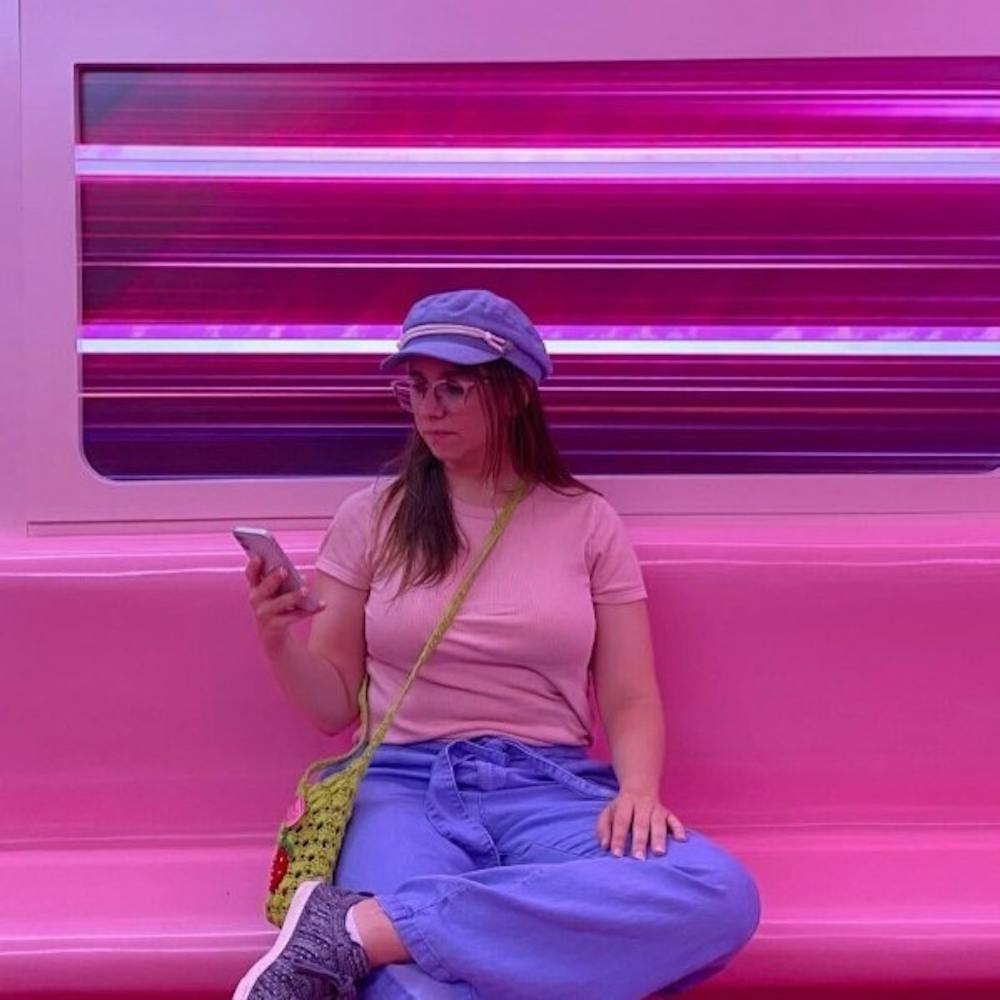A 5-year-old girl sat up all night tapping away at the buttons of her Nintendo 64 controller, racing her mother in a competitive video game of Diddy Kong Racing.
She could have been just another Mario Kart enthusiast in a sea of gaming kids; however, she saw something special about the game introduced by her mother.
Now, as the only professor of game design and animation at Seton Hall, Prof. Brianna Shuttleworth said she wants to continue sharing her appreciation for games by spreading the same enthusiasm to her students.
Shuttleworth began her creative journey at SHU in 2023 and has remained part of the faculty ever since. Prior to teaching at SHU, Shuttleworth earned a Master of Arts degree in Game Design from New York University and taught as an adjunct professor. She also has previous experience of game design and animation work in the game industry, including her development of the award-winning game, Paper Shaper.
Shuttleworth said she got into teaching because of her love for the students, and she wishes to further foster a creative environment and community in game design.
“I want the world for them, and I will fight for my students,” Shuttleworth said.
She also said that game design, even if it’s not a student’s major, can be life-changing.
“It’s such a safe place to experiment and find yourself,” Shuttleworth said. “In a world where we don’t get to play with [game] systems that often, that can be so empowering for people.”
As an instructor at Seton Hall, Shuttleworth encourages students to engage in collaborative work, growth, and the communication of ideas through a system she calls the “magic circle,” meaning which states that everyone is participating or cooperating in something within a unique space.
Nowadays, Shuttleworth does more than lead classes and teach her students about game design and animation. For instance, she frequently encourages her students to get involved with several collaborative events pertaining to game design and animation, with the most recent ones being the Global Game Jam and Big East Animation Showcase.
According to Shuttleworth, these events are dedicated to showcasing the work of hardworking game developers and animators who are tasked with completing new projects in a short amount of time. Yet, prior to Shuttleworth’s arrival at Seton Hall, such events had never been hosted at the university before.
Shuttleworth said the reason she wanted to promote these events was to encourage students to build their collaborative skills of working together instead of focusing on only their individual work.
“I’m constantly trying to find ways to bring those opportunities to students so that they can have that experience,” Shuttleworth said.
Moreover, she said she utilizes such events to help students and faculty members develop a greater bond with each other through games and animation.
“When I picture myself long-term as a professor, I want to create a student and faculty community that is a collaborative community,” Shuttleworth said.
Shuttleworth added that she will continue to host similar collaborative game design and animation events for students at Seton Hall. Currently, she is working on revamping the Department of Communication, Media, and Arts curriculum to push game design as a core part for the major since it is bundled into the electives.
According to Shuttleworth, she also wants to create a coding class for the curriculum.
“Students should understand the basics of coding logic and how it works within their chosen discipline,” she said.
For more specific classes, Shuttleworth said she would like to teach a History of Play course in which students dissect and learn about the act of playing. Students would think about how animals engage in play, as well as how humans are predisposed to early forms of playing around when they are young.
Shuttleworth said History of Play would be an important subject to touch upon because the act of being playful is not necessarily the same thing as playing a game.
“It’s a different mode of expressing yourself,” she said. “We’re seeking out these learning opportunities, and whatever we’re exposed to, we take it in like sponges.”
Shuttleworth also said she would like to create a physical space at Seton Hall where people can check out all the games that students have worked on in their classes by walking over to each station and playing the games for themselves.
“The idea is that you could try the game together and talk about it,” Shuttleworth said.
Additionally, Shuttleworth stated she is curious to see how game design at Seton Hall develops in the next few years since they have already touched the campus in different ways, as seen in the esports department.
“I think you will see games continue to grow at Seton Hall,” she said. “There is a lot of learning that can come from games and game design in particular that we just have to be more open and aware of.”
Vanessa Gerbi can be reached at vanessa.gerbi@student.shu.edu.





